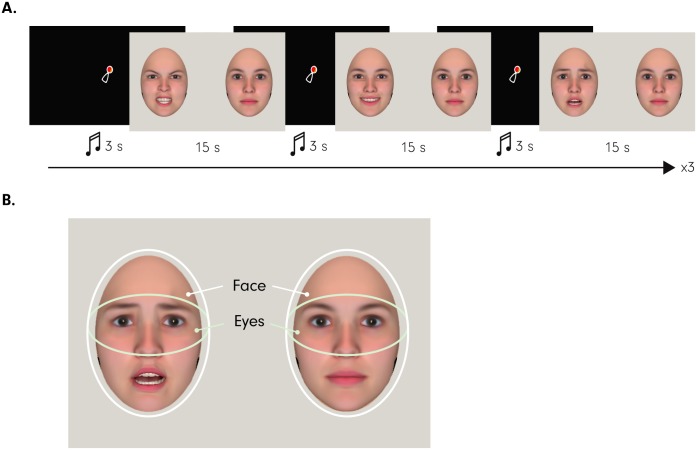Fig 2.
A: This illustrates the eye tracking paradigm employed in the current study at age 7 months. Note that the eye tracking experiment followed the fNIRS experiment. As shown here, infants were presented with experimental trials consisting of a side-by-side presentation of a neutral face and an emotional (happy, angry, or fearful) face. Note that in the actual experiment, the side on which an emotional face and neutral face were presented was counterbalanced, and the face identity changes were pseudorandomized (see Materials and methods for details). B: This illustrates the 2 areas of interest (face and eyes) that were used in the analysis of the eye tracking data. Please note that infants viewed photographic images of real faces (see Materials and methods) and that the facial images shown here were computer generated with the FaceGen software (https://facegen.com) for illustrative purposes. fNIRS, functional near-infrared spectroscopy.

